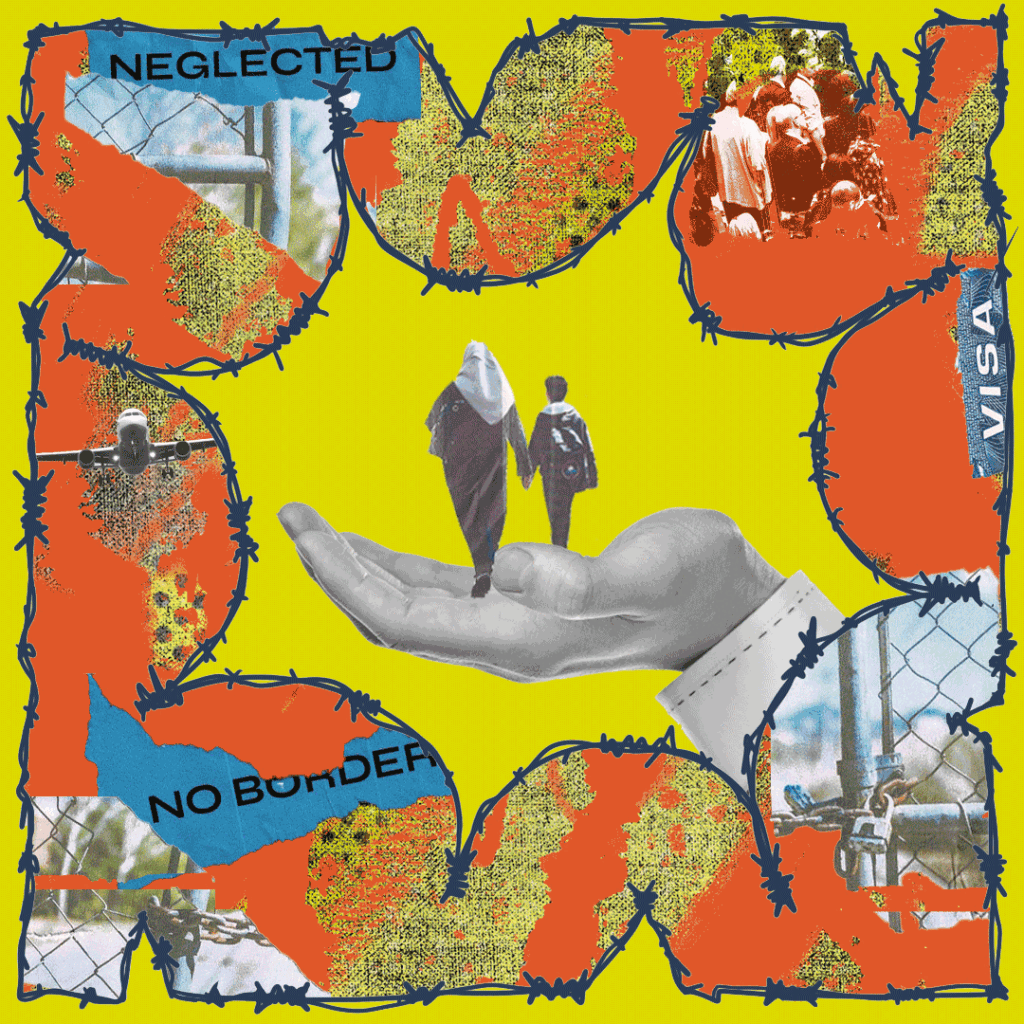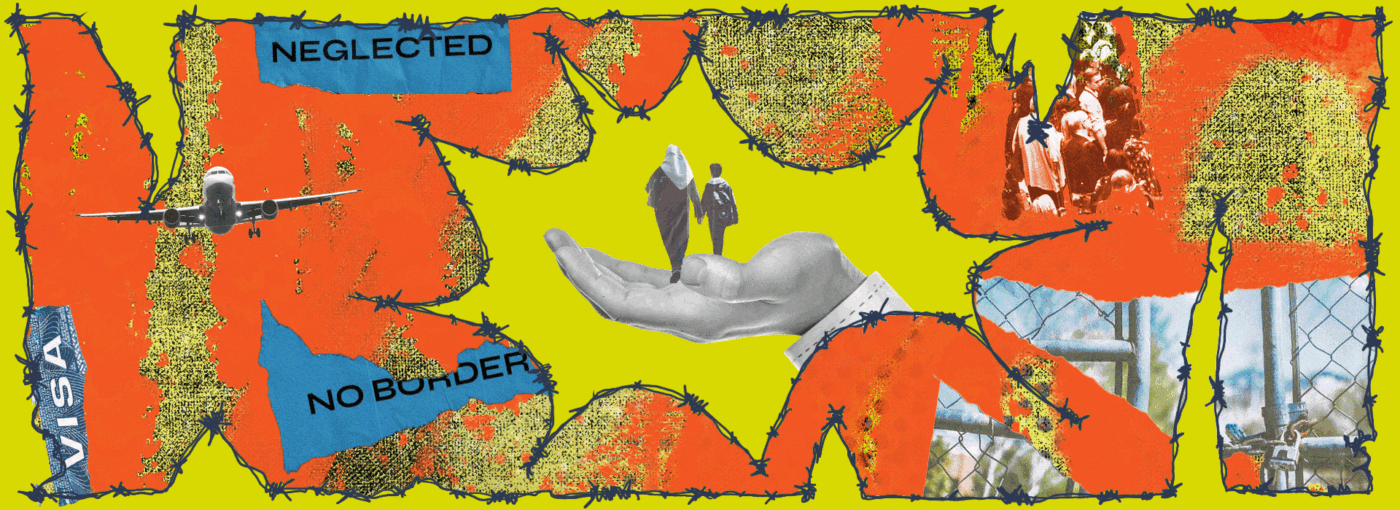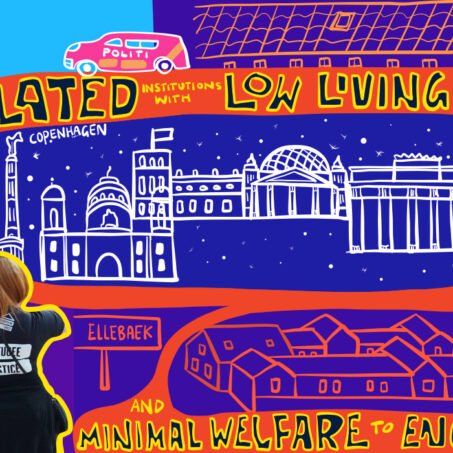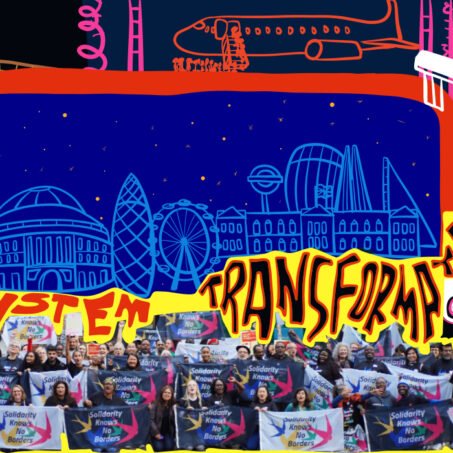How was the border industry constructed and why?
People subjected to negligence and abuse in detention centres with horrific conditions. Deportation flights ripping apart families and dropping people into unfamiliar and life-threatening environments. Children drowning as dinghies are forced to turn back by armed patrol boats guided by drones overhead. Advanced technology employed to steal personal data without consent. It is impossible to ignore the breadth, depth and injustice of the harm caused by western states’ militaristic responses to the ‘migrant crisis’. While it is governments who create the racist immigration policies which underpin this violence, neoliberalisation has seen the majority of these activities outsourced to the private sector. Thus the West’s border regime now relies on a vast network of hundreds of companies who provide and develop the technologies and labour required to make the desired ‘hostile environment’ a reality, as well as playing a significant role in promoting these policies and the alarmist, racist, xenophobic narratives which feed into them.
This is ‘the border industry’, and it bears many similarities to the arms and prison industries in the ways that the constituent parts all reinforce and support one another in service of mutually profiting from suffering. Just as with the prison industrial complex, the close relationship engendered between politicians and the offending companies creates a dangerous feedback loop. Government creates the opportunity for profit by scapegoating migrating people and creating aggressive policies targeting them which need to be enforced. Private companies jump at this opportunity to line their pockets and the resulting profits drive further investment and innovation in cruelty. These companies then use this relationship to influence state policy themselves, lobbying government for even more violent policies and more opportunities to profit. This creates a world in which almost all social issues are presented as immigration problems, and the solution is always seen to be the expansion of violent border security infrastructure.
Who is profiting?
The border industry can loosely be divided into five sectors, all of which are inherently violent, with household names making millions engaging in these horrific activities. Airlines such as Titan and Privilege Style compete for government deportation contracts, while multi-functional companies like Mitie and Serco run horrific detention centres such as Yarl’s Wood, maximising profit at the expense of the welfare of those under their charge. Huge arms companies such as Leonardo and Airbus create significant migration push factors through the impacts of their weapons on communities and environments around the world. They then profit from turning those military technologies against those same people they have displaced, developing drones and sound cannons for use against people whose only ‘crime’ is to move. Firms such as Palantir, Motorola and Accenture all use their expertise in AI and imaging to develop biometric tracking technologies and social media tracking software marketed for use at borders. Additionally, tech giants such as Amazon and Microsoft are making billions from data-hosting contracts with governments across the world. All of these sectors are expanding such that the entire border security industry is growing by almost 10% annually and is predicted to reach over £60 billion by 2025.
Which communities are disproportionately impacted?
Bordering exists and functions to delineate those people seen as undeserving and to control their access to scarce resources. Unsurprisingly, determinations of who does and doesn’t belong in a particular space are heavily underpinned by the biases and structures which shape our society. Capitalist notions of who is ‘economically productive’ are ableist, patriarchal and white supremacist. Skyrocketing admin fees privilege richer classes while the targeting of surveillance and raids is plainly racist and Islamophobic. All of this combines to create a situation in which borders deliberately act as a multiplier of other systems of oppression, being experienced as porous and invisible for those already privileged whilst those who most need to move are confronted by impermeable, violent barriers.
Myth busting
“We just need better companies to manage these activities”
While it is important to highlight the many illegal human rights violations carried out by companies engaging in border security activities, it is also crucial to convey that the border industry is inherently violent and cannot be reformed. While it is abhorrent that people are held in squalid conditions and subjected to physical abuse during deportation, frontline communities have long argued that any form of detention or deportation is a form of violence which must be resisted, no matter how ‘properly’ it is done.
“The border industry helps to protect migrating people from people smugglers”
As Warsan Shire wrote, “no one puts their children in a boat unless the water is safer than the land’. People are not moving out of choice, but necessity, and when the border industry closes safe routes it does not dissuade them from making the journey but merely pushes them to undertake it in a much more dangerous manner.
“AI removes bias from bordering”
It has been proven many times that AI is not bias free but in fact often magnifies the biases of its creators, which are inevitably incorporated into the coding. When these technologies are applied to borders they serve only to make the existing discrimination more efficient, opaque and difficult to contest.
What do alternatives look like?
The ultimate vision is a world free from borders, where arbitrary characteristics have no impact whatsoever on opportunities and outcomes and all are free to move, stay and thrive. However, since bordering is so deeply entrenched in the way we navigate, perceive and interact with the world, it is impossible to fully imagine what this world would look like yet. What we can do is to fight for the features we know will be inherent to such an ideal in order to approach a point from which the finer details become clearer. A form of bordering based on compassion and care rather than greed and fear is an important staging post on the journey towards a no borders world, even if it is not the end goal. If we recast immigration as a humanitarian issue rather than a security crisis, the resources which are currently being poured into militarised solutions could instead be put towards the creation of safe migration routes and global structures designed to ensure that people thrive wherever their desired destination.
What movements are happening on the ground?
With the government committed to increasingly fascist immigration policy, many organisers have moved away from policy advocacy to instead focus on direct action to prevent the implementation of that policy. Anti-raids groups across the country are showing incredible solidarity by organising to prevent the removal of community members by border force agents, and groups such as Stop Deportations have coordinated similar responses to deportation flights. Movements such as Reclaim Your Face are campaigning to resist the expansion of dystopian surveillance technologies while Campaign Against the Arms Trade (CAAT) have long been organising against many of the companies most active in the border security arena. People & Planet’s Divest Borders campaign targets the border industry as a whole, with student groups across the country demanding that their universities sever ties with all companies complicit in violence against migrating people. This kind of approach has already seen significant success in the last years, with the Stop TUI campaign forcing the airline to cease operating deportation flights for the Home Office. The system cannot function without the collaboration and consent of the public, and by refusing to participate we can weaken its reach. It is hoped that this kind of resistance, alongside other forms of lobbying and protest, can eventually force government to abandon its hostile environment policies.
What can you do?
Read:
- Divest Borders Action Guide
- Undoing Border Imperialism – Harsa Walia
- Financing Border Wars – Transnational Institute
- Against Borders: The Case for Abolition – Gracie Mae Bradley & Luke De Noronha
- Build Bridges Not Walls: A Journey to a World Without Borders – Todd Miller
- How the $68 Billion Border Surveillance Industrial Complex Affects Us All – Vice
- Lobbying Fortress Europe: The making of a border-industrial complex
- Hostile Environment: How Immigrants Became Scapegoats – Maya Goodfellow
Watch/Listen:
- The Vertical Border (documentary)
- Flee
- Undercover: Britain’s Immigration Secrets
- Practising little utopias: Gracie Mae Bradley and Luke de Noronha on Against Borders (20 mins)
- Rise of the high-tech border industry – BBC
- Border Violence and Security in a Warming World – The Border Chronicle
Articles:
- Asylum for Sale – but at what cost?
- What you need to know about new (again) UK Home Secretary Suella Braverman
- From refugee to undocumented worker in London’s gig economy
- How the Hostile Environment is purposefully leaving young migrants without a future
Get Involved:






